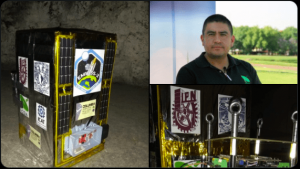A new course for international trade is being sought by the four Latin American nations who are part of the still-existent Trans-Pacific Partnership (TPP) deal even if the United States is out of it.
The foreign relations as well as economy secretaries of the Pacific Alliance nations, Colombia, Chile, Mexico and Peru, meet today at the Viña del Mar resort in Chile to redefine and seek new ways to boost the restart of the already very advanced negotiations on TPP.
The pow-wow represents a preliminary round of negotiations for the four Latin American nations to hold what Mexico’s Foreign Relations Secretary (SRE) Luis Videgaray calls “a high-level dialogue in Asia-Pacific integration initiatives” to explore the “challenges and opportunities” at hand with other participating nations.
Also participating in the Pacific Alliance gathering as “guests” are representatives from Australia, New Zealand, Japan, China, South Korea, Singapore, Malaysia, Vietnam, Brunei and Canada.
And a surprise: the United States was also invited. And even if President Donald Trump has turned his back on TPP in an utterly protectionist move, the United States will have what’s known in Spanish literature as “a stone guest” or silent onlooker status at Viña del Mar.
But also it is of utmost importance that China, a nation that has been lobbying in Latin America to be accepted to fill up for the absence of the United States, is now present among the observers.
Most definitely the four Latin American nations are looking forwards to a continuity of negotiations which were almost finished when Trump opted for pulling the United States out. And from the other side of the Pacific, the guest nations are apparently eager to continue with the project.
The conference offers most interesting tariff discussion possibilities as it is clear that all the participants have discarded the presence of the United States, but as a whole they are aware that they still are a potentially formidable trading bloc also without China.
There is no definite agenda for the meeting in Chile but rather, the four Latin American nations are exploring the potential of diversifying its trade to the west without impairing their goods flow to the United States and taking advantage of the huge territory the four nations cover in the American continent, along with Canada.
Mexico’s Economy Secretary Ildefonso Guajardo — also in Chile — said that the initial objective is “to lay down bridges with the Asian nations to explore collaboration schemes that aim towards the economic integration of the Asia-Pacific region.”
On Thursday he will return to Mexico and inform about the outcome of the preliminary meeting in Chile and also to meet with Canada’s International Trade Minister Francois-Philippe Champagn, who is now visiting Mexico to analyze a further increase in commerce between the two nations, which in 2016 reached a record figure of $40.8 billion.
The gathering in Chile was organized by Chilean Foreign Relations Minister Heraldo Muñoz who said that his country was most unhappy with the decision made by President Donald Trump to try to kill TPP altogether.
“We are going to insist in opening up to the world and in integration under different modes as we have done in the past, through bilateral, sub-regional and regional agreements,” he said.
This viewpoint was shared by Colombia, Mexico and Peru who immediately accepted the invitation made by the Chilean government to hold this new meeting to enhance and grow Trans Pacific trade.
A final observation to all this is that it was the United States who spearheaded the idea of an integration of “Pacific Rim Nations” into a trade block back in 1989. Now that it is near completion, it is the first one to pull out.
That’s odd, but that’s the way it is.










